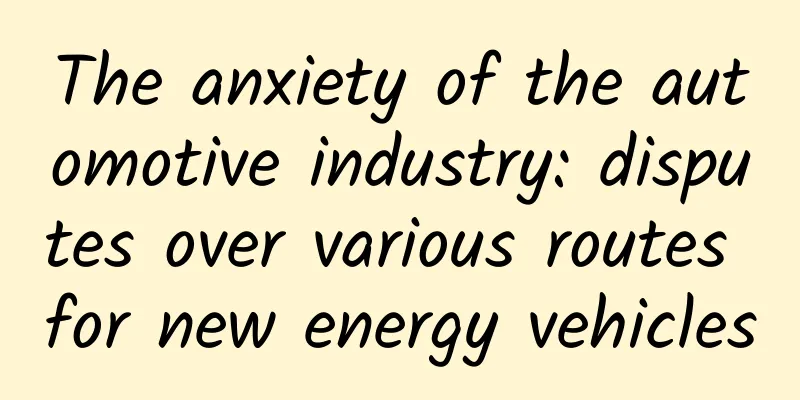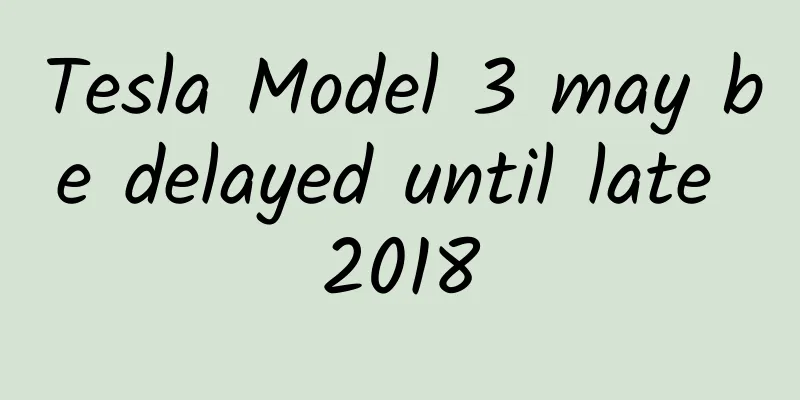The anxiety of the automotive industry: disputes over various routes for new energy vehicles

|
The global automotive industry is quite anxious during this period. The source of the anxiety is a Stanford professor who predicts that within eight years, that is, by 2025, the entire land mobility will be fully electrified, and the oil industry, which has existed for more than a century, will die. Eight years seems like a long time, not enough for the entire automotive industry to complete the transition from traditional fossil energy to electrification. But if the professor's prediction comes true, it will not be as simple as labor pains for the entire oil industry, the automotive industry, and even consumers, but more of a disaster. It is not an exaggeration to say that last week, there was another incident in China where a Tesla vehicle caught fire after a traffic accident, and almost nothing was left of the car. However, Tesla not only did not respond to this, but also kept pushing the news that "Model X became the first SUV model to receive a 5-star rating in all crash tests." In the short term, it will be difficult for pure electric vehicles to get rid of the label of "prone to fire". Putting aside the safety issue, the actual situation in China is that if there are no supporting measures such as restrictions on the use of traditional cars and subsidies for the purchase of new energy vehicles, consumers are still reluctant to buy an electric car. A market that is maintained by force of policy is difficult to sustain. On the other hand, the useful life of fossil energy continues to break existing cognition. As far as oil is concerned, the world's proven reserves can be used for at least 50 years, not counting the shale oil in the United States and the combustible ice in China. It will take some time for shale oil and combustible ice to be commercialized, but at most within 20 years, and they can completely take over the job of oil. It is estimated that it will take 1,000 years to use up shale oil and combustible ice. Of course, whether shale oil and combustible ice are as magical as advertised remains to be verified by time. From January to May this year, the growth rate of new energy vehicles in China is not as high as in previous years. This is expected, because subsidies have declined and relevant departments are also performing their regulatory functions, which will wash out a large number of "quick money-making" companies. For players who have already entered the market, the more pragmatic approach now is to spend more time on traditional fossil fuel models, continue to explore the potential of traditional internal combustion engines, continuously improve efficiency, and reduce energy consumption through lightweighting and other means. The Stanford professor has a great background and is born with the aura of a prestigious school, but the professor himself dare not assert, but only make "predictions". Any prediction can be right or wrong. Once an automobile company predicted that by 2011, the world will enter the "hydrogen era". Now it is 2017, hydrogen cars have just started, and there are only one or two companies researching hydrogen cars. "2020" was once a node in the legend. It was said that electric vehicles would be popular in this year, not only electric vehicles, but also autonomous driving. However, no one mentions 2020 anymore, because 2020 is "whistling" and the time is too close, and the "bull" is easy to be exposed. Now all kinds of predictions about "2020" have been replaced by "2025". Public opinion is too self-righteous. The development of this world is often far beyond expectations. In the field of new energy, the best approach should not be to limit a certain path, but to "cross the river by feeling the stones" and encourage companies to try and explore different routes. Taking multiple routes simultaneously may be the best choice at present. Betting too early and over-forcing things will often only backfire. There is still huge uncertainty in the future. You can be anxious, but you can't live in anxiety. The dispute over the new energy route cannot be resolved now, so let's leave it for the future. As a winner of Toutiao's Qingyun Plan and Baijiahao's Bai+ Plan, the 2019 Baidu Digital Author of the Year, the Baijiahao's Most Popular Author in the Technology Field, the 2019 Sogou Technology and Culture Author, and the 2021 Baijiahao Quarterly Influential Creator, he has won many awards, including the 2013 Sohu Best Industry Media Person, the 2015 China New Media Entrepreneurship Competition Beijing Third Place, the 2015 Guangmang Experience Award, the 2015 China New Media Entrepreneurship Competition Finals Third Place, and the 2018 Baidu Dynamic Annual Powerful Celebrity. |
>>: Intel is the foundry for Chinese chips. Domestic CPUs are rising and competing with Qualcomm
Recommend
A fetus found to have "super male syndrome" needs to be aborted, otherwise it will become a criminal when it grows up?
“Are children with super male syndrome potential ...
Millions of IPs Create Science and Technology Talents to Strengthen the Country丨Photovoltaic Power Generation Lights Up the Future of Cities
Photovoltaic power generation is a renewable ener...
Whispering Community Pinduoduo VIP Member Series - Super Detailed Pinduoduo Practical Operation Strategy
The course content includes 8 short courses for be...
Yiche: China's auto brand sales in November 2024 are released, BYD, Volkswagen and Toyota rank in the top three
Recently, Yiche released the sales ranking of aut...
Where did the Kuahuqiao people, the surfers of Qiantang River 8,000 years ago, go?
The winning works of the 2023 "China Science...
How to use promotional coupons to get the maximum conversion?
Coupons are rarely missed in any activities among...
The price is expected to start from 300,000 yuan and will be launched this year! BYD Dynasty's first large-sized flagship MPV Xia debuted at the Chengdu Auto Show
On August 30, BYD Dynasty's new IP "Xia&...
Teacher Yu Yinuo’s Chinese language basics improvement course (9-13 years old)
Resource introduction of Teacher Yu Yinuo’s Chine...
Can bidding hosting improve the quality of corporate marketing?
Can bidding hosting improve the quality of corpor...
From 0 to 1, a complete analysis of the key points of APP from launch to promotion
As a newbie in the operation circle, I still don’...
Douyin is a small business with zero threshold to make money with a daily income of 600+. All you need is hands!
Did you know? Emojis can not only be used for pic...
The price adjustment strategy you must know in Baidu bidding!
Adjusting keywords every day is a necessary task ...
Piano video tutorials, piano tutorials for beginners
Piano video tutorial directory: Basics: 01. Piano...
We spent 400,000 yuan to hire an anchor to sell goods, but only 3,000 yuan of goods were sold. What should we pay attention to when the anchor sells goods?
I spent 400,000 yuan to hire a live streamer to p...
How to do knowledge marketing by Baidu promotion? Cases and optimization ideas
Now is the end of the year, and Baidu's resou...









